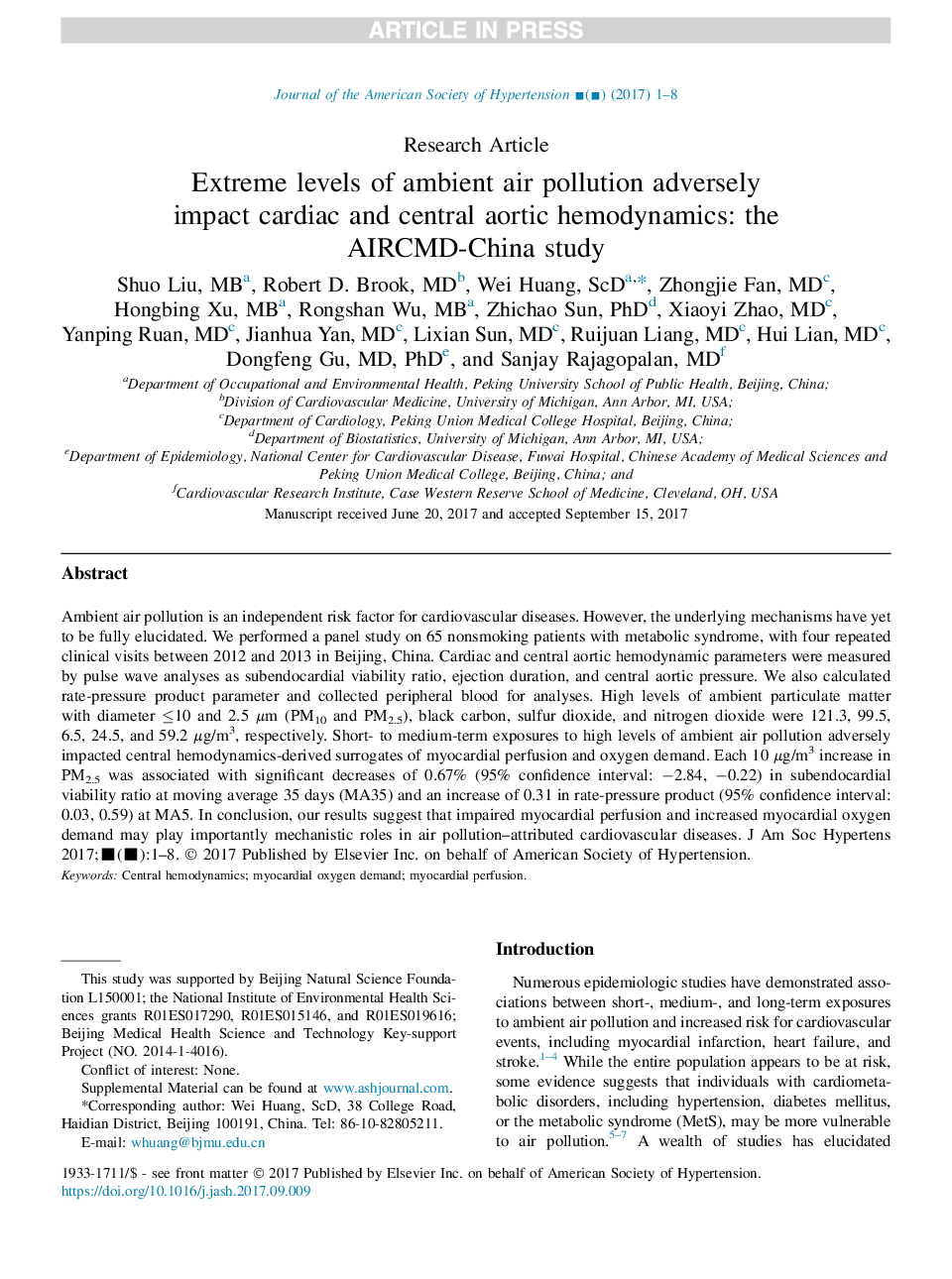| Article ID | Journal | Published Year | Pages | File Type |
|---|---|---|---|---|
| 8667538 | Journal of the American Society of Hypertension | 2017 | 11 Pages |
Abstract
Ambient air pollution is an independent risk factor for cardiovascular diseases. However, the underlying mechanisms have yet to be fully elucidated. We performed a panel study on 65 nonsmoking patients with metabolic syndrome, with four repeated clinical visits between 2012 and 2013 in Beijing, China. Cardiac and central aortic hemodynamic parameters were measured by pulse wave analyses as subendocardial viability ratio, ejection duration, and central aortic pressure. We also calculated rate-pressure product parameter and collected peripheral blood for analyses. High levels of ambient particulate matter with diameter â¤10 and 2.5 μm (PM10 and PM2.5), black carbon, sulfur dioxide, and nitrogen dioxide were 121.3, 99.5, 6.5, 24.5, and 59.2 μg/m3, respectively. Short- to medium-term exposures to high levels of ambient air pollution adversely impacted central hemodynamics-derived surrogates of myocardial perfusion and oxygen demand. Each 10 μg/m3 increase in PM2.5 was associated with significant decreases of 0.67% (95% confidence interval: â2.84, â0.22) in subendocardial viability ratio at moving average 35 days (MA35) and an increase of 0.31 in rate-pressure product (95% confidence interval: 0.03, 0.59) at MA5. In conclusion, our results suggest that impaired myocardial perfusion and increased myocardial oxygen demand may play importantly mechanistic roles in air pollution-attributed cardiovascular diseases.
Related Topics
Life Sciences
Neuroscience
Endocrine and Autonomic Systems
Authors
Shuo MB, Robert D. MD, Wei ScD, Zhongjie MD, Hongbing MB, Rongshan MB, Zhichao PhD, Xiaoyi MD, Yanping MD, Jianhua MD, Lixian MD, Ruijuan MD, Hui MD, Dongfeng MD, PhD, Sanjay MD,
